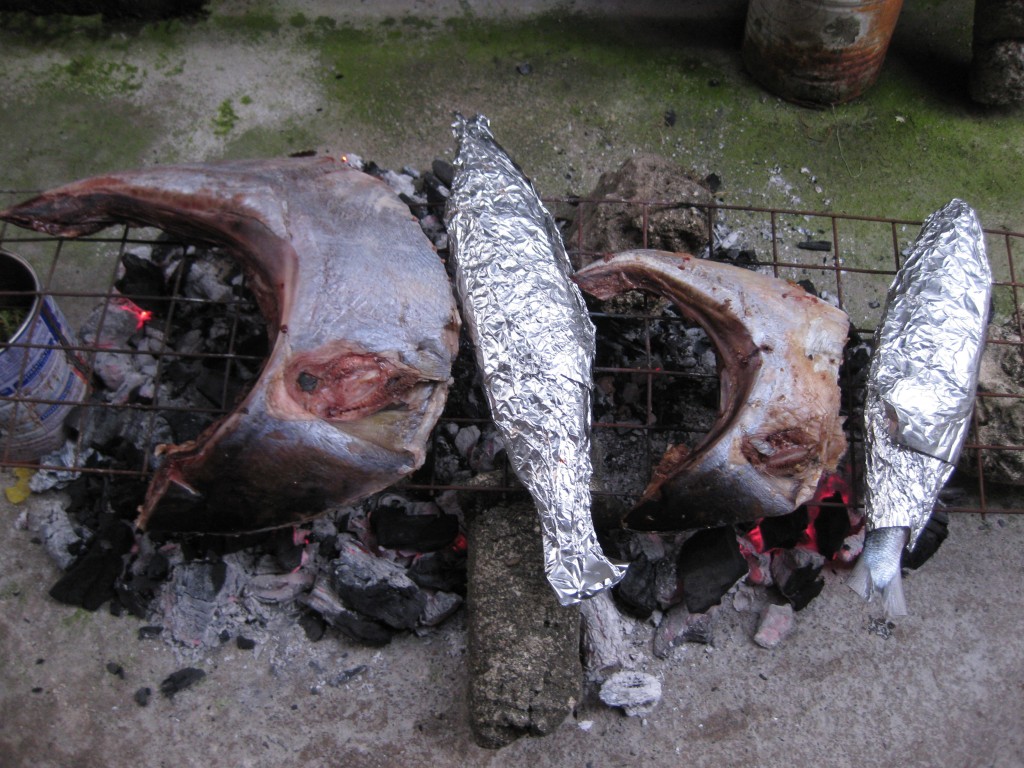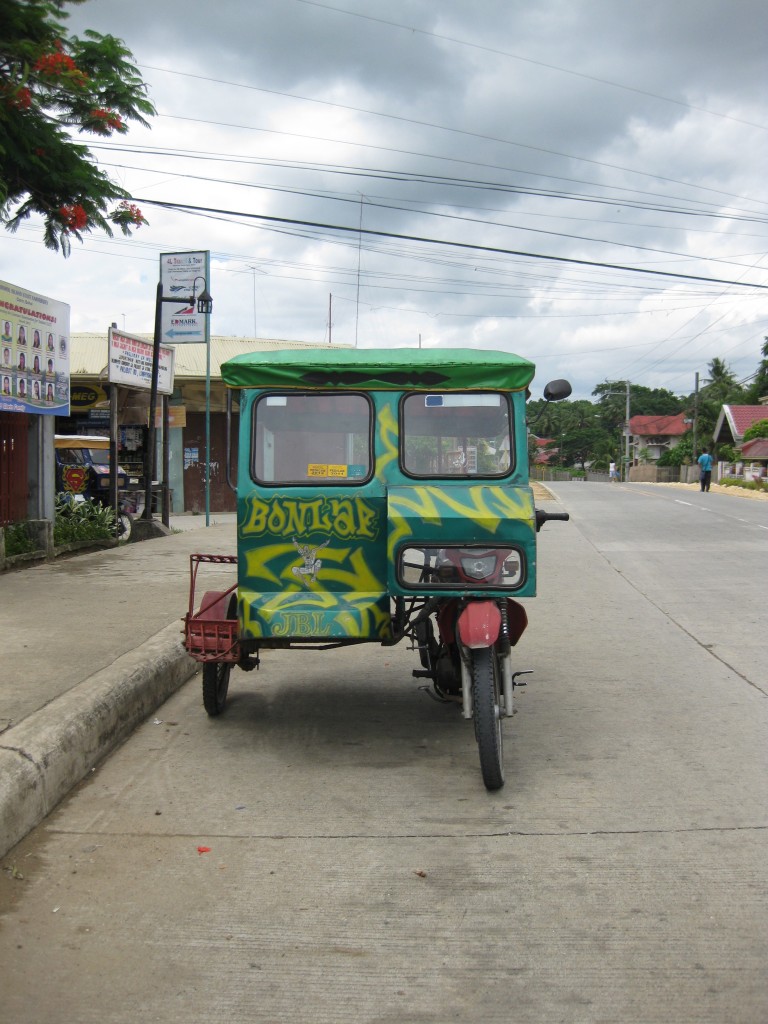Maybe it was the first time I rode on a sakayan, a handmade pontoon boat; or perhaps it was when I sat down to hire my research assistant; or possibly it happened when I first saw bags of live, brightly colored reef fish being offloaded from boats into a truck, destined for sale to a pet store: somewhere along the way, I realized that I am in the Philippines to carry out my research.
I don’t mean “mine” in a possessive way – without the collaboration and input that I’ve received, my project, “Perceptions of Climate Risk in Fishing Communities in the Danajon Bank Region of the Philippines,” wouldn’t exist. Yet the more I learn about the resources and people here, the more responsible I feel for applying my research to the work that is already being done in the Philippines.
Once all your funding proposals are turned in, your budgets calculated, and your literature review finished, you may feel that your learning is complete. You have spent hours researching your site, you’ve read numerous ethnographies, and you’ve reviewed census data for the last century. You know how much rain falls per year, how prone the soil is to erosion, and what percentage of the local diet is fish. You know that the winds that come with the typhoons are called habagat and amihan. You have answered countless questions about your research: why you, why this particular study site, why your topic is worthy of attention and funding.
You can answer these questions, and you can even explain the global significance of the project you propose to carry out –– and yet you have never set foot in the country. And once you arrive, you realize how little you actually know.

You may know beforehand that 40% of the diet is fish, but you don’t know that locals prepare it with the scales still on, and cook it in sour vinegar. You don’t know that they serve it with soy sauce, chili and lime. You don’t know the small yellow mangos are the sweetest, or that Filipinos call “Hey Joe” to white-skinned visitors. Until you arrive, you can’t understand the intoxication of smog and sweat and drying fish, and you can’t imagine relishing goose bumps, which appear on your skin not because you are cold but when a dog barks loudly behind you, or when someone brushes your arm.
Nearly the instant I arrived in the Philippines and began discussing my project with my host organization, The Coastal Conservation and Education Foundation, the focus of my research shifted. Originally I’d intended to compare the climate risk perceptions of fishers to the perceptions of non-fishers, but an opportunity soon arose to partner with an ongoing study that looks at the biophysical and socioeconomic vulnerability of the barangays (villages) where I will be working. As a result, I’m now going to compare different fishers who face varying degrees of exposure to climate change. I’ll also ground-truth CCEF’s findings, and help flesh out the stories and human beings that underpin the statistical analyses.

While my new focus has required more time, preparation, and, yes, research, the notion of being an important piece of an even more important puzzle is exciting. It was this excitement that carried me through the hot, smoggy days in the frantic streets of Cebu City. Cebu has the feel of a bustling Asian hub, with small roadside restaurants, honking jeepneys, and small buses that constantly crisscross the city, taking passengers from one place to the next for about 16 cents a ride. But the city is also westernizing: it’s added a number of posh malls, bigger and more upscale than malls in most US cities. There are coffee shops serving frappuccinos; there are fusion restaurants. Yet these icons of the West are juxtaposed against men with little carts frying chicken feet in vats of oil, and children with dirt-smudged faces running barefoot through the streets.

While the overwhelming thrill of being in a new city helped me appreciate Cebu, the coastal component of my research was distinctly lacking, and I was desperate to get out of the city and into the villages that will occupy so much of my attention. Boarding the ferry to Bohol, the base for many of my sites, was a relief. The breeze off the water, the diving terns, the golden beaches and little fishing boats bobbing in the surf –– all these sights renewed my appreciation for the project I have chosen.
While I haven’t begun to conduct any of my interviews quite yet, every day I build up my base of understanding, gaining knowledge that I never encountered in journal articles or books. I know that I’ll learn as much from the afternoon thunderstorms, the dehydration, and my conversations with the children in the park as from the formal interviews I conduct.
